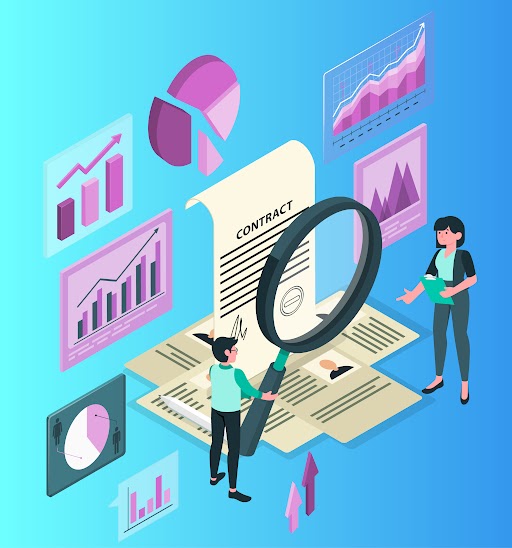A contract is a legally binding agreement between private parties that specifies the conditions of the partnership. Contracts are essential for collecting vital information about organizational commitments, obligations, rights, procedures that reflect business choices.
According to Mckinsey(1), contracts account for a considerable portion of most businesses’ spending. Utilities, aerospace, defense, and food manufacturing corporations might have 90 percent or more of their yearly sales represented in contracts with suppliers and vendors.
From small startups to large companies, starting from a deal with a group of people to an agreement between two persons on a simple house contract everywhere contracts come into place. Contracts specify how the two parties will collaborate along with stating their responsibilities.
Many firms struggle to keep track of their contracts after they’ve been signed. According to HBR(2), inefficient contracting costs businesses anywhere from 5 to 40% of the deal’s value, depending on conditions.
If a large tech company, for example, has a high volume of contracts with various renewal dates and renegotiation terms, reviewing and tracking it would take hundreds of hours and a staff of contract managers to ensure that no renewal or opportunity for negotiation is missed.

Challenges faced by contracts in the current date
Contracts are dispersed on a shared drive, cloud, paperwork tucked away in cabinets, and so on and are not unusual in many firms. As a result, there is no single location where anyone can receive the overall picture. Since there is no single area where you can review all of your contracts to see what’s working and what’s not, late payments and unused contracts attract consequences.
Because there is no record of the conditions under which they can be terminated, ineffective vendors are given a long rope to keep causing problems.
Contract management is not a difficult job. It ought to be easy. However, this isn’t always the case. Let’s take a look at some of the reasons why contract management can be so tough:
Time-consuming
A contract’s implementation entails a number of steps, including drafting, negotiating, and signing. These are lengthy and time-consuming procedures.
Following the writing, the parties must meet in person to discuss and debate the agreement’s provisions. If the terms and conditions still need to be modified, they meet again and again to make adjustments until they reach an agreement, which takes a long time.
Difficulty during access
With many contracts being digitally scanned, it can be difficult to search for a specific document by human power which might consume a lot of time.
When businesses create agreements on paper, they are frequently kept in one location for safekeeping. However, after a few years, people find it difficult to locate a specific document. Finding and looking for preserved paper documents is a cumbersome activity.

How can AI make an impact in Contract Management?
Unstructured contract documents can be converted into structured enterprise data using artificial intelligence. AI in contract management can assist businesses in detecting business risks and opportunities as AI understands contract language and clause meanings.
Optical Character Recognition (OCR)
Unstructured data can be found in a variety of formats, including documents, audio files, movies, emails, photos, and log files, to name a few. Despite its volume, unstructured data is one of the most underutilized enterprise resources due to inadequate tools to extract and analyze it.
OCR is the electronic or mechanical transformation of pictures that are written by hand, or printed text into machine-encoded text, regardless of whether it is from a scanned document, an image document, or a scene photograph.
Is OCR technology converting print or handwritten text into machine-encoded text?
OCR technology converts print or handwritten text into machine-encoded text which can be used by businesses. Some of the advantages of OCR are:
- Manual data entry takes time and is prone to errors. Businesses may digitize documentation via OCR, reducing the need for human interaction and boosting the data’s integrity.
- Documents can only be exported as pictures or PDFs using traditional scanners. A contract or purchase order, for example, cannot be scanned and then edited in software like Microsoft Word or Google Docs. However, the text can be recognized and exported to a machine-readable format for additional editing and processing by the usage of an OCR engine.
- Documents converted using OCR can be sorted and organized according to a set of criteria. Organizing invoices by kind or vendor is a well-known example.
Natural language Processing
The important clauses of old contracts can be extracted and reviewed using Natural Language Processing and Artificial Intelligence. This not only allows enterprises to examine contracts in a single step, but it also gives them a comprehensive perspective of their contract. It serves as a quality check to spot important phrase problems and discrepancies. It also aids in identifying crucial terms that may require re-negotiation prior to renewal.
Natural Language Processing can analyze contract agreements to extract critical metadata such as expiration and renewal dates, payment conditions, clauses and obligations, and so on, and categorize them into predefined categories. It saves time and physical work by eliminating the need to sift through pages and pages of paper papers to find all of the important information contained in contracts. It also guarantees that all crucial phrases are highlighted, with no manual omissions or errors in obtaining all relevant data.
With the increasing number of business difficulties, firms must connect themselves with tech-enabled solutions. This involves a shift from previous methodologies and the use of cutting-edge technologies such as Artificial Intelligence (AI) and Machine Learning. We can assist you with modernizing your business regardless of where you are on your AI journey.
